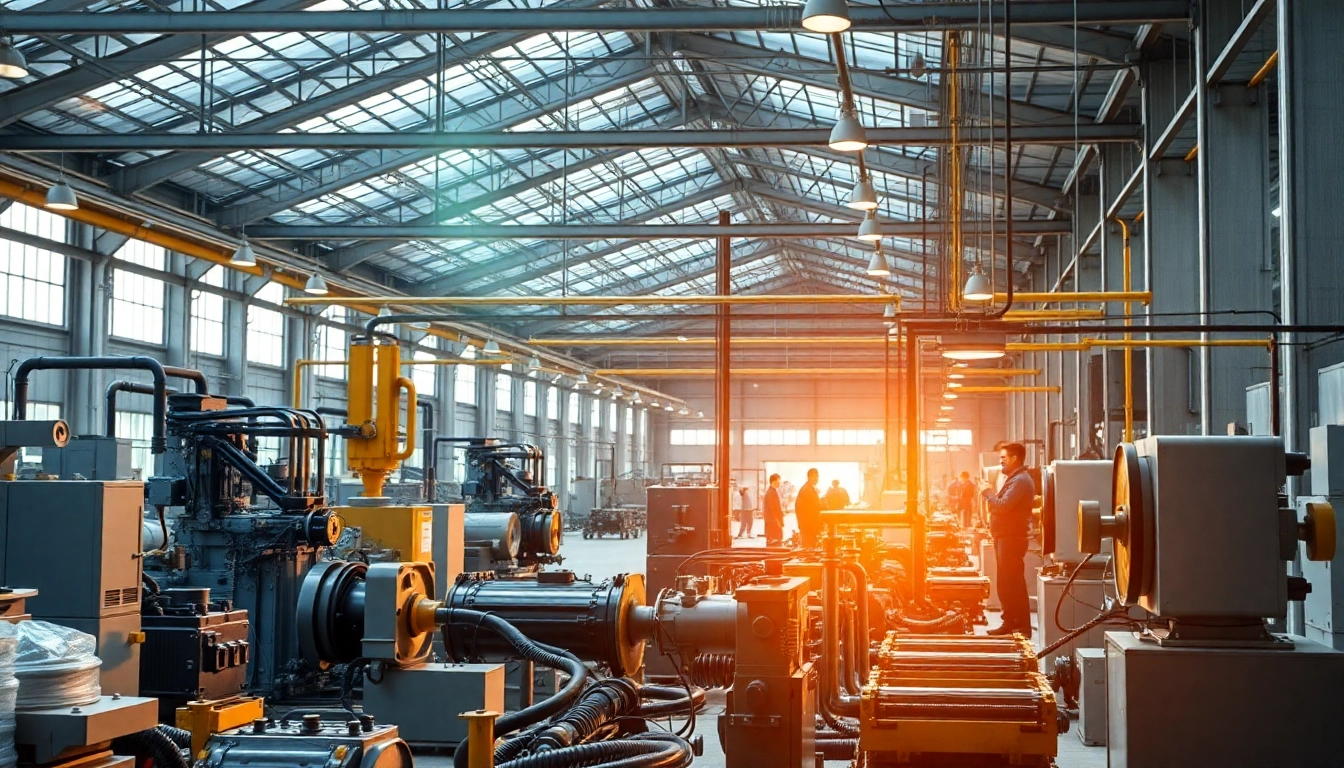Understanding Manufacturing Costs
If you’re in the manufacturing world, understanding production costs isn’t optional—it’s essential. From labor to raw materials to global market shifts, dozens of factors influence manufacturing costs. Importantly, the role of technology in this sector has become increasingly vital, shaping the way companies strategize their production processes.
What Constitutes Manufacturing Costs?
Manufacturing costs are categorized into various elements, each contributing differently to the overall cost structure. Understanding these components helps businesses optimize operations and enhance profitability.
- Direct Materials: These are the raw materials used in the production of goods. Fluctuations in material prices can significantly impact overall costs.
- Direct Labor: The cost associated with workers directly involved in the manufacturing process. This includes salaries, benefits, and payroll taxes.
- Manufacturing Overhead: Costs that cannot be directly attributed to production, such as utilities, rent, and administrative expenses related to manufacturing operations.
Direct vs. Indirect Costs in Manufacturing
Direct costs are easy to identify and allocate, typically associated with specific products or production processes. In contrast, indirect costs are more complex and often require allocation based on various metrics such as percentage of total production or estimated usage.
Typically, understanding the relationship between direct and indirect costs can simplify financial planning and operational efficiency, allowing manufacturers to pinpoint areas for cost reduction.
The Role of Technology in Cost Reduction
Advancements in technology have revolutionized manufacturing processes, leading to significant cost reductions. Techniques such as automation and smart manufacturing systems allow companies to streamline their operations, reduce labor costs, and minimize waste.
Furthermore, software and tools that utilize big data analytics help manufacturers make informed decisions regarding inventory management, production scheduling, and maintenance, ultimately leading to lower operational expenses.
The Impact of Labor on Manufacturing Expenses
Labor is one of the most significant components affecting manufacturing costs. As such, managing labor expenses effectively is crucial for maintaining profitability.
Labor Costs: An Ongoing Concern
Labor costs can vary significantly based on location, market demand, and the skills of the workforce. The need for a skilled labor force is crucial for companies looking to innovate and maintain competitive advantages.
Automation Technologies and Labor Efficiency
Automation technologies, such as robotics and AI, have profoundly impacted labor dynamics in manufacturing. These technologies enhance efficiency by taking over repetitive and labor-intensive tasks, allowing human workers to engage in more strategic roles.
Implementing automation can significantly reduce labor costs and improve throughput, providing a solid return on investment.
Skill Development in Technology-Driven Manufacturing
As technology continues to advance, so does the need for skilled labor. Companies must invest in training and development to ensure their workforce can manage new machinery and software, fostering a culture of continuous improvement and innovation.
Moreover, developing employee skills in line with technological advancements contributes to greater job satisfaction and retention, further reducing turnover costs.
Raw Material Costs: Navigating Fluctuations
The cost of raw materials plays a critical role in determining overall production costs. Various factors can affect material prices, necessitating manufacturers to remain vigilant about market trends.
Global Market Trends Affecting Raw Material Prices
Global events and market trends, including political changes, trade agreements, and natural disasters, can significantly impact raw material availability and costs. Companies must develop strategies to mitigate these risks through diversified sourcing or long-term contracts with suppliers.
How Technology Affects Material Sourcing
Technology enhances sourcing strategies by enabling real-time data analysis and supplier relationship management. Advanced analytics tools allow manufacturers to assess market conditions and adjust their procurement processes accordingly.
Additionally, technologies such as blockchain can improve supply chain transparency, ensuring the authenticity and quality of materials used in production.
Eco-Friendly Sourcing: A Technological Approach
As sustainability becomes a priority for consumers and governments alike, companies are shifting towards eco-friendly sourcing practices. Adopting technologies that reduce waste and promote sustainable production is essential for meeting regulatory requirements and consumer expectations.
Technology’s Role in Production Efficiency
Leveraging technology is critical for enhancing production efficiency, enabling manufacturers to reduce costs while improving output quality.
Utilizing Smart Manufacturing Systems
Smart manufacturing systems integrate IoT, AI, and machine learning to create connected production environments. This connectivity allows for real-time monitoring and adjustments, optimizing processes and reducing waste.
The Benefits of Industry 4.0 Technologies
Industry 4.0 encompasses the digital transformation of manufacturing through smart technology. This includes predictive maintenance, automated quality control, and enhanced supply chain management. Companies that embrace Industry 4.0 can expect improved operational efficiencies and reduced costs.
Data Analytics for Cost Management
Data analytics plays a pivotal role in managing manufacturing costs. By analyzing production data, organizations can identify inefficiencies and areas for improvement. This leads to more informed decision-making and enhanced strategic planning.
Case Studies: Successful Tech Integration in Manufacturing
Examining case studies of companies that have successfully integrated technology into their manufacturing processes can provide valuable insights into best practices and innovative strategies.
Real-World Examples of Technology Reducing Costs
Numerous industries have leveraged technology to drive down manufacturing costs. For instance, a renowned automotive manufacturer implemented robotic process automation (RPA) on the assembly line, leading to a 30% reduction in labor costs and a significant increase in production speed.
Lessons Learned from Innovators
Innovators in manufacturing have often emphasized the importance of continuous evaluation and adaptation of technology. Companies that frequently assess their technological capabilities and seek opportunities for improvement are more likely to maintain competitive advantages.
Future Trends in Manufacturing Technology
Looking ahead, the manufacturing landscape will continue to evolve with the advent of new technologies such as advanced robotics, AI-driven analytics, and sustainable production processes. Understanding these trends is essential for manufacturers aiming to excel in an increasingly competitive market.


